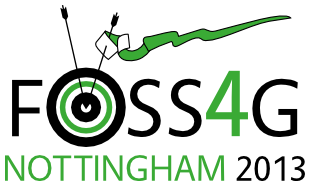Presentation
iGUESS – The Good, The Bad And The Ugly Of Developing A Distributed Modeling System For European Cities
Chris Eykamp (CRP Henri Tudor) with Luís de Sousa (CRP Henri Tudor), Ulrich Leopold (CRP Henri Tudor)
12:30 on Friday 20th September (in Session 32, starting at 11:30 a.m., EMCC: Room 2)
Show in Timetable
The integrated Geospatial Urban Energy decision Support System (iGUESS) was conceived as a way to help urban planners explore renewable energy and energy savings potentials to make cities more sustainable and self sufficient. Models that calculate solar, wind, and geothermal energy potential can be complex to build and run, so we felt we could simplify the process by creating a web-based tool that a planner could run from their browser. To maximize interoperability with existing models and data sources, we decided to build the system using existing OGC standards and protocols. iGUESS is a web-based system for connecting data, modeling, and visualisation services distributed across the Internet. Users can leverage data and processing services offered via standard OGC protocols such as WMS, WFS, WCS, CSW, and WPS. iGUESS helps users match data with models, launch model runs, monitor progress of execution, and visualize computed results. iGUESS does not store data or host computation services, but instead relies on data and modeling web services provided elsewhere in the project, by our partners, and by third parties. Developing iGUESS has given us a better understanding of the strengths and weaknesses of a distributed modeling system based on OGC services, and some of the inherent limits of these protocols. The interface allows users to interact with services in real-time, using minimal caching, so it always presents an accurate reflection of what data and modeling services are available. This design has presented us with interesting challenges related to intermittent and unpredictable availability of distributed data and process services that live beyond the bounds of the system. The primary advantages of this distributed modeling system is its modularity and flexibility. Users can run models using input datasets they (or others) may have published for different purposes. Models can be upgraded and improved by their publishers without requiring users to install new software. Finally, running models via WPS can be easier than configuring a local desktop model, and the processing is offloaded onto a computer presumably more suited to handling large, complex calculations. Many of the specific challenges we faced have been related to the limitations of the WPS protocol. It is difficult to precisely specify inputs or describe outputs, and there is no mechanism for prioritzing or terminating a running process. The lack of process control is particularly relevant to the sorts of large, processor intensive models that iGUESS was designed to run. Also, very little of the data our partners need to use is actually available online, and they have encountered a wide range of logistical and institutional barriers to providing it themselves. Lastly, we are still trying to cope with issues related to exposing computationally expensive processes to the Internet. This talk will present a technical overview of the iGUESS system, how it works, alternate approaches we considered (distributed architecture vs. traditional “desktop” approach), and the lessons we learned building it (managing complexity and the risks of oversimplification). It will also explore some of the “real world” hurdles mentioned above, and will offer some ideas and insights into the type of applications that are best suited for the WPS protocol.
